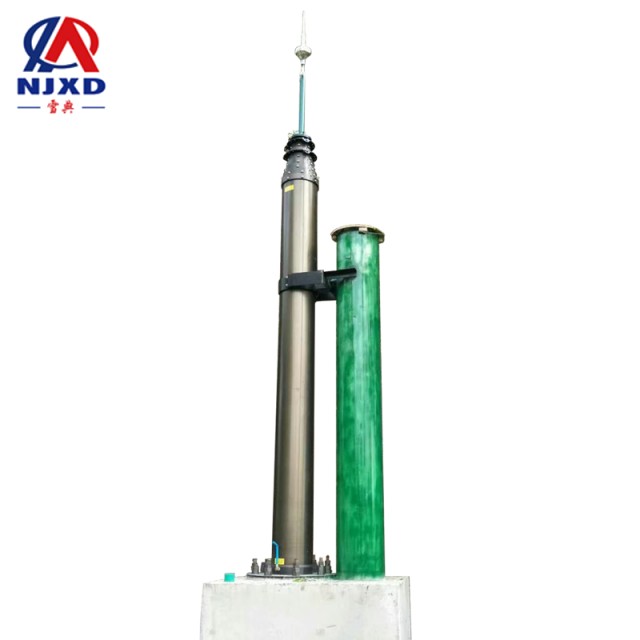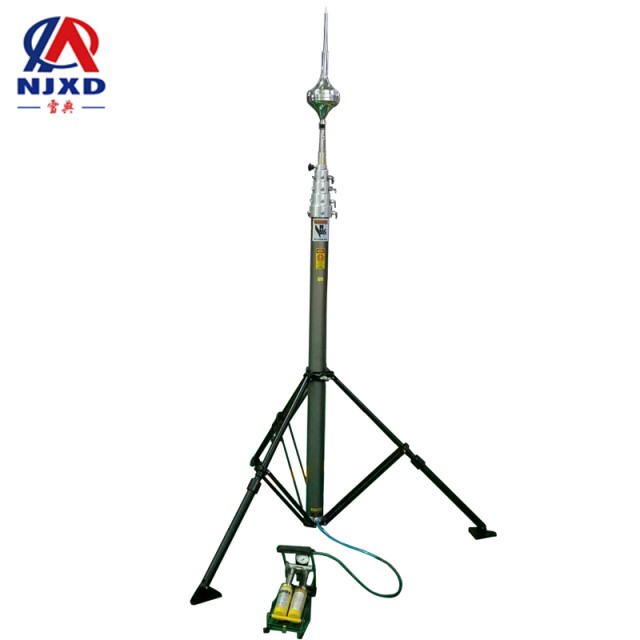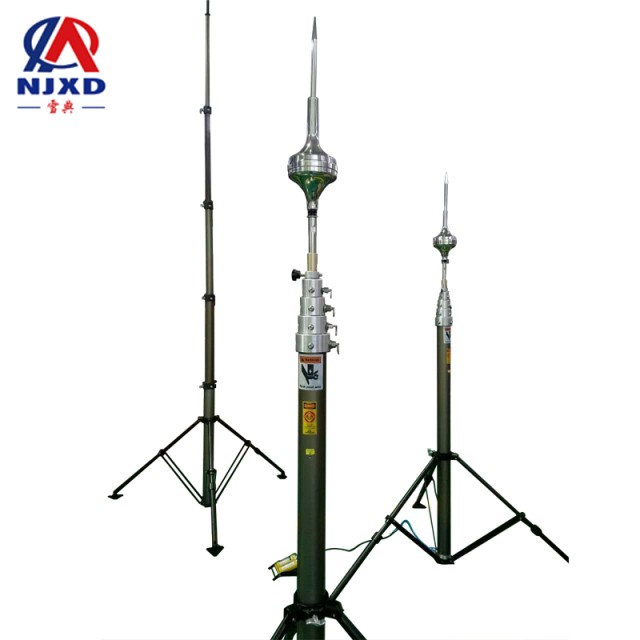NEWS
Installation of lifting ightning Rod
Time:2021-05-26 View:

If the building is equipped with a lightning receiver but has no grounding or the grounding effect is not good, it will cause greater damage to the building or its personnel when the lightning is connected, it is more unsafe than a building without a lightning receiver. The lightning strike accident occurred in Kaixian county, Chongqing in 2007 because the roof of the classroom was composed of steel bars concrete slab, and the steel bars were not well grounded. When Thunder broke, there was no place to release them, therefore, the indoor personnel were discharged through the roof and wall of the classroom, resulting in a tragic accident in which seven pupils in the classroom died and dozens were injured.
According to the requirements of Chapter 5 "lightning protection device" in GB50057 "code for lightning protection design of buildings", The Lightning receiver can use copper, tinned copper, aluminum, aluminum alloy, hot dip galvanized steel, stainless steel, made of various materials such as copper-plated steel on the outer surface, as long as it meets the requirements of its minimum section and thickness. That is to say, as long as it is not so easy to rust, it will not be easily damaged due to wind and rain, most common metal materials can be used to make lightning receivers. Take the most common iron connecting flash Rod as an example, GB50057 requires that its minimum diameter should not be less than 8mm.

In this sense, the vast majority of building steel bars in the market can be used to make ightning Rod as long as their diameter is greater than 8mm. Only one or two layers of anti-rust paint need to be painted on their surface after installation, its price is very low. In this sense, there is no brand in ightning Rod, because ightning rod is only a small category in the flash receiver, and any metal component can be used as a flash receiver. Only the function of ightning rod is emphasized, and the ightning rod of famous brands is emphasized, while the common lightning function of other lightning receivers is ignored, and the objective fact that the lightning receiver cannot play its role without the down lead and grounding device is ignored, this concept is harmful and needs to be corrected.
It should be noted that there are ightning rod of various so-called well-known brands in the market, most of which use 'pre-discharge 'or 'pre-discharge' as their selling points, most of them are so-called "special ightning Rod" imported from abroad. The claimed protection scope far exceeds the protection scope calculated according to the principle of grounder method, and its price is very expensive, tens of thousands of yuan per piece. The so-called scientific principles of these ightning Rod have not been recognized in mainland China so far, and their lightning protection effects have not been recognized by practice. Even if such a ightning rod is installed on the building, it is still calculated according to the principle of the traditional grounder method when lightning protection acceptance is carried out, and such ightning Rod customers are purchased at a high price, beware of this risk.
Therefore, instead of buying such so-called special ightning rod at a high price to protect buildings, it is better to carefully investigate, carefully design, calculate and verify the site according to the scientific principles of the grounder method, carry out on-site construction honestly in accordance with national regulations, and use ordinary Lightning connectors such as ightning Rod and lightning strip to properly protect the place, so as to achieve the purpose of safety, reliability and economic benefits.

The so-called grounder method assumes that a sphere with a certain radius (ranging from 100 meters, 60 meters, 45 meters, and 30 meters according to different building protection levels) rolls along the outer surface of the building, when the sphere only touches the lightning receiver and the ground without touching the part to be protected, the part is protected by the lightning receiver. Generally speaking, the place that the sphere can touch is the place where Thunder can hit, and the place that the sphere can't touch is within the protection range of the lightning receiver.
The calculation of the protection scope of the lightning receiver lists the calculation of single-branch lightning rod (GB50057), two equal-height connecting flash rods, two unequal-height connecting flash rods, four equal-height connecting flash rods arranged in a rectangle, and a single connecting flash line (connecting flash belt and lightning belt), the calculation method of the protection range of the two equal height connecting flash lines is drawn, and the relevant schematic diagram is drawn.
For the vast number of technicians in the lightning protection industry, according to the method given in GB50057, some simple situations can be calculated manually, but in daily work, it is often encountered in site situations that are much more complicated than the cases listed in the specification, such as: multiple flash rods of unequal height and not arranged in a regular manner, flash lines of unequal height, the combined protection range of connecting flash Rod and connecting flash line cannot be calculated manually for these complicated situations, and no specific calculation method is given GB50057. This problem is a common technical problem in lightning protection industry.
